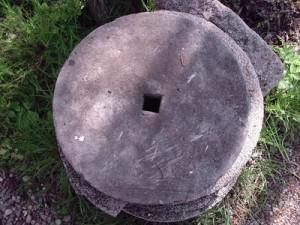A short history of milling
Cereals and cereal products were the mainstay of human nutrition until the start of the 20th century. Raw grains were milled using a technology known from the earliest days of human civilisation. Indeed, the first grain crushing tools date back to the 13th century BC.
Crushing gradually gave way to reciprocal and then continuous rotation methods. In ancient times, manually-operated mills spread throughout Europe and were a part of most households by the middle ages. Based on the energy used to power the mill, the earliest mills were dry mills (using human or animal power), followed by watermills (reliant on the flow of water) and windmills (again, reliant on the wind). Ship mills were a specific type of mill for cereals built on a pair of boats anchored directly on a waterway to take advantage of the available water power. Ship mills are of Byzantine origins. The oldest depiction of a ship mill on the Danube is from an engraving of Bratislava from 1595.

Milling on Žitný ostrov
Watermills were an integral part of the landscape of Žitný ostrov in the past. They allowed the advantageous natural conditions offered by the Danube and economic conditions of the time to be exploited. Ship or floating mills concentrated in mill ports were widespread on the Danube and its distributary channels. Ship mills were gradually banned by the end of 18th century due to the clumps of mills that posed a navigation hazard for other ships, and were subsequently replaced by watermills on shore. While ship mills were positioned over the current so as to best harness the power of the water on the blades of the wheel, water first had to be delivered to the mill wheel in the case of watermills on shore. A stream of water was directed by a weir made of wicker and stakes above the mill with the water then carried to the wheel by a wooden trough.
A large number of watermills were built, in particular along the Little Danube. They gradually become obsolete with advances in science and technology.Only four remain to the present day and are located in Jelka, Jahodná, Dunajský Klátov and Tomášikovo. One ship mill remains in Kolárovo. The mills have been refurbished and opened to the public as technical landmarks.


Jahodná, a village near the Little Danube, was once well-known for milling. Unfortunately only two of the previous eleven mills that milled cereals from far and wide remain.
The last local miller, Vojtech Takács, sold his mill to the Slovak National Museum in Martin in 1972. A second mill is still located in the village. The watermill in Jahodná is located in the Alba Régia section of the village. Boldizsár Renczés ordered its construction at the end of the 19th century. Lordly forester Štefan Nagy bought the mill after a fire in 1920 and converted it into a water-powered sawmill in 1931. Power was generated in the mill for the cutting equipment, which sped up the cutting process and provided lighting for public buildings in the village. Following his death, the mill passed to the Žitný Ostrov Museum in Dunajská Streda on 27 December 1987. Today it belongs to the state-owned Západoslovenské energetické závody, which refurbished the mill in 1999. The mill is currently accessible to the public.